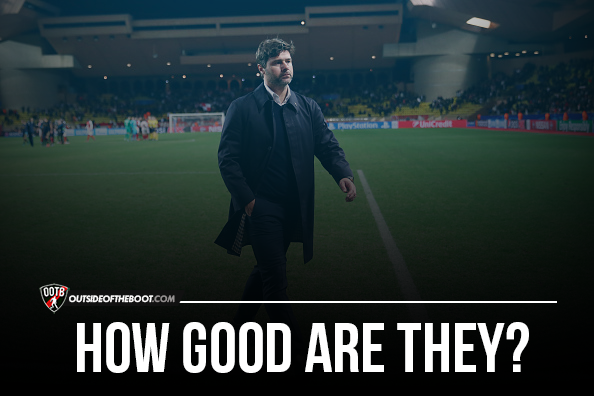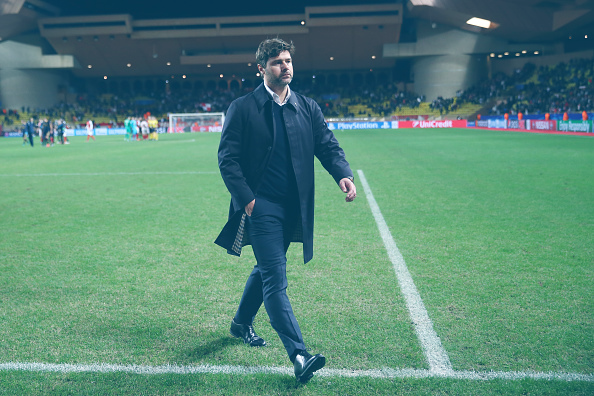James Turvey writes about how good Tottenham really are, and what we should expect from them this coming campaign.
As we approach the holidays, the action is getting fast and furious in the Premier League. Teams have multiple matches in a week, and a team that enters December in the middle of the table can quickly find itself approaching a top six spot with a strong five weeks, or, on the flip side, staring down a relegation battle after a month of struggles. In a league as balanced as the Premier League, fortunes can change fast, especially in the jam-packed month of December. This is a league in which only 10 points separate current relegation spot holders, Sunderland, and seventh-place Southampton; only seven points separate sixth-placed Manchester United and second-place Liverpool (we’ll ignore Chelsea and their 43 points for the time being) – those seven points can be made up in the blink of an eye this time of the year.
As for our team under the microscope today, Tottenham Hotspur, they currently sit in fifth, one spot out of an all-important “Top Four,” with their current standing portending another trip to the Europa League that this club would almost certainly pass on if given the opportunity to do so. They sit just four points out of second place, but are also only three points above a Manchester United side that has quietly not lost in the Premier League since October 23.

So what can we make of this Spurs side? We are just under halfway through the Premier League campaign, so some statistics are beginning to stabilize, but others, especially team record, may still have a bit of “small sample bias” to them. Let’s go through some of the metrics available to see how the boys in blue and white stack up:
Shots and Possession
If we want to get a bit more granular than wins, losses, and draws, we can take a look at how well Tottenham are possessing the ball, and whether that possession is being put to good use.
According to the tracking statistics at WhoScored, Tottenham are currently third in the league in possession (trailing Manchester City and Liverpool) and lead the league in shots per game (by a narrow margin over Liverpool).
That being said, it is slightly disturbing to see that of the 20 teams in the Premier League, no team takes more shots from outside the penalty box than Spurs. Their 9.4 such shots per game are well beyond the second-place Liverpool side (6.8 such shots), and could explain a chunk of why Spurs have struggled to convert their near-league-high level of shots on goal into as impressive a goal tally.
Now shots and possession aren’t the be-all and end-all of the world. We all know that Leicester City won the league last year with a third-from-the-bottom 44.8 percent possession and an eighth-ranked 13.7 shots per game, but they were a historic anomaly for a reason. It is typically far superior to have the ball, and to be sending the ball towards the net as much as possible.
Goal Differential
Let’s move on to what teams do with that possession and those shots. Over the course of a full Premier League campaign, goal differential is one of the most telling metrics we have. In the 2015-16 campaign, the correlation between a team’s place in the table and their goal differential was .93, nearly a perfect correlation. If one were to simply rearrange the final 2015-16 table in order of goal differential, only Stoke City would move more than two spots in the table.
This year the top of the table, in particular, is already settling into a neat and orderly fashion according to goal differential. There are six teams with a goal differential of better than +2, and they all reside in the top six.
The first good news for Spurs supporters is that Manchester United, the squad that topped Tottenham less than two weeks ago and only trail Spurs by three points, are a far cry off the pace off the top five in terms of goal differential (+7), a good ten goals behind Tottenham, in fact. More good news, Spurs are a top four squad by goal differential. The top four right now: Chelsea (+24), Liverpool (+20), Arsenal (+19) and Tottenham (+17). Manchester City (+16) is just a hair behind Spurs, so we shouldn’t put too much faith in Spurs as a definitive top four side just yet, but goal differential at least shows them to be in the top five tier.
Expected Goals
One step beyond goal differential is expected goals, the extremely helpful metric for looking beyond wins and losses, and maybe the best way to do so right now. Expected goals simply measure the legitimate chances each team gets on goal, which can cut through the early-season noise a bit better than merely goals scored and conceded. Expected goals, as a stat, does this by increasing the sample size, and taking out some of the luck of running into a hot goalkeeper, or clipping the crossbar on multiple occasions.
Now there are different expected goal models out there right now, which shows that even though the metric is extremely helpful, it clearly isn’t perfect. That being said, according to the expected goals chart released by the Challengers Podcast this week, the Big Six have the following expected goal totals through December 19:
Chelsea (+14.7)
Liverpool (+20.2)
Manchester City (+21.2)
Arsenal (+8.5)
Tottenham (+15.2)
Manchester United (+9.9)
This is good news for Spurs, as it is yet another metric in which they look very strong. They are third in the league – and notably ahead of league-leaders Chelsea – by expected goals, trailing the same two teams as they trail in possession.
So what does all of this mean for Tottenham Hotspur?
First, it’s fair to say that Spurs are certainly a legitimate top six team. They aren’t near the top of the table by some fluke, but that should be no surprise based on recent years. Nor will a top six finish be enough to satiate the desires of Spurs fans who have grown hungrier than ever after last season’s legitimate title chase.
One other important factor to think about is the remaining schedule. The 2016-17 Premier League is just two match weeks away from its halfway point. By January 1, every Premier League side will have faced off exactly once, giving us an excellent data point, as the league-wide strength of schedule played will be as balanced as it can be. (There is, of course, the home/road difference to deal with, but having all teams with one match against each other is still an excellent data point). So who do Spurs have in their next two weeks to round out their first half schedule? Southampton (away) and Watford (away), two winnable matches. According to the excellent Fantasy Football First Game Difficulty Checker, those two matches both come in as “Easy Medium.” Southampton will be, by far, the bigger challenge, but the Saints are only a hair above-average (+1) by goal differential, and are certainly not in the same tier as Spurs.
Compare that to some of the teams ahead of Spurs in the table. Manchester City still have to travel to Liverpool, even after their rousing victory over Arsenal. Arsenal already had their most challenging match, having dropped points at the Etihad, pulling Spurs within one point of their rivals. Liverpool narrowly picked up three points in their derby with Everton, but still have to host an improving Stoke City side, and make that trip to the Etihad to face Manchester City. (Chelsea, meanwhile, have two “Easy” matches, a scary thought considering the six-point cushion they already have atop the table.)
If Spurs can knick at least four points in their next two matches (the full six points might be difficult with their current road woes), that might well be enough to lock in a top four spot at the halfway mark of the 2016-17 Premier League campaign, and a deserved top four spot, at that. They are a top four team by every metric used in this piece, and these metrics were not cherry-picked to make Spurs look good – they are simply the best metrics we have right now to measure Premier League teams.
For my money (which, admittedly, is a bit tainted by Spurs fandom), Spurs are a top four side, and we should hold the team to expectations of another trip to the Champions League next year.
- Analysis: Just how good are Tottenham? - December 27, 2016



























































